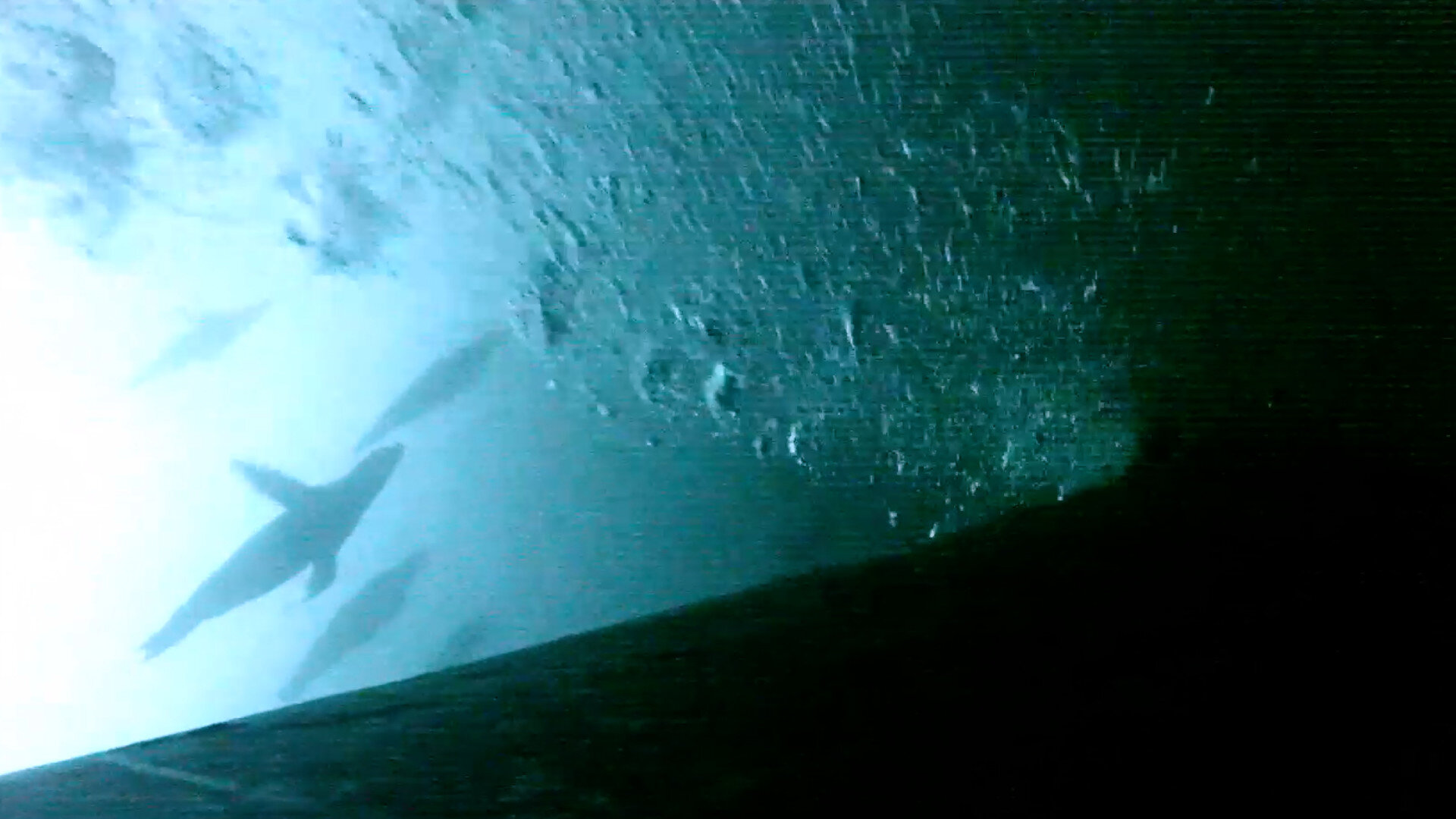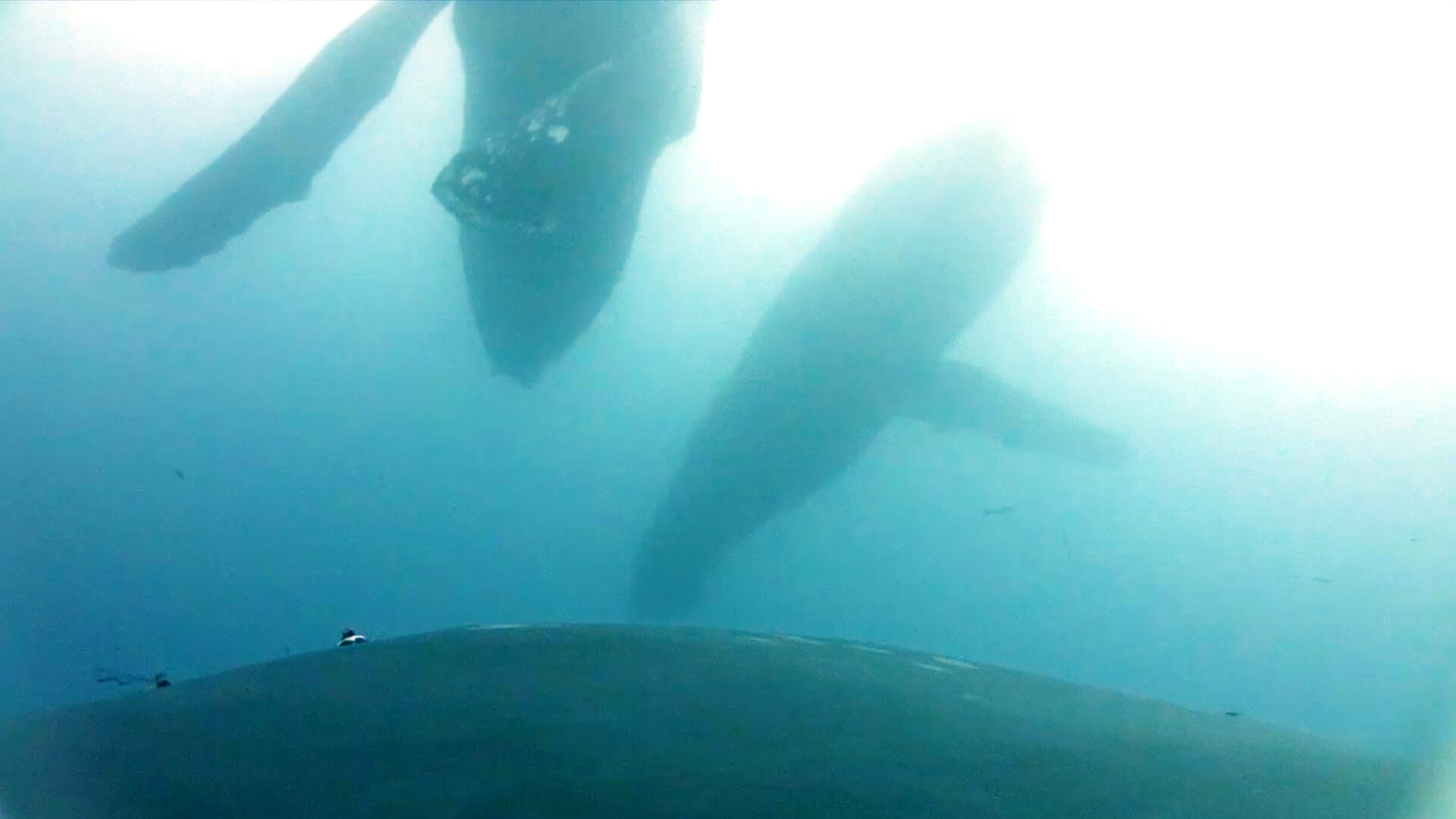From a Whale's Back
From a Whale’s Back (2020) is an installation that explores the visual and sonic underwater world inhabited by whales of different species—orcas, humpbacks, and minke whales—from Antarctica to the northeastern Pacific. It uses video taken from tags used by scientists to monitor whales.
Featured Works
"FROM A WHALE’S BACK” SOLO EXHIBITION
Radius Gallery, Santa Cruz
29 May - 26 July 2020
What might it mean to be oceanic? To act in the world from a place of oceanic consciousness? From a Whale’s Back is an installation that explores the visual and sonic underwater world inhabited by whales of different species - orcas, humpbacks and minkes - from Antarctica to the northeastern Pacific.



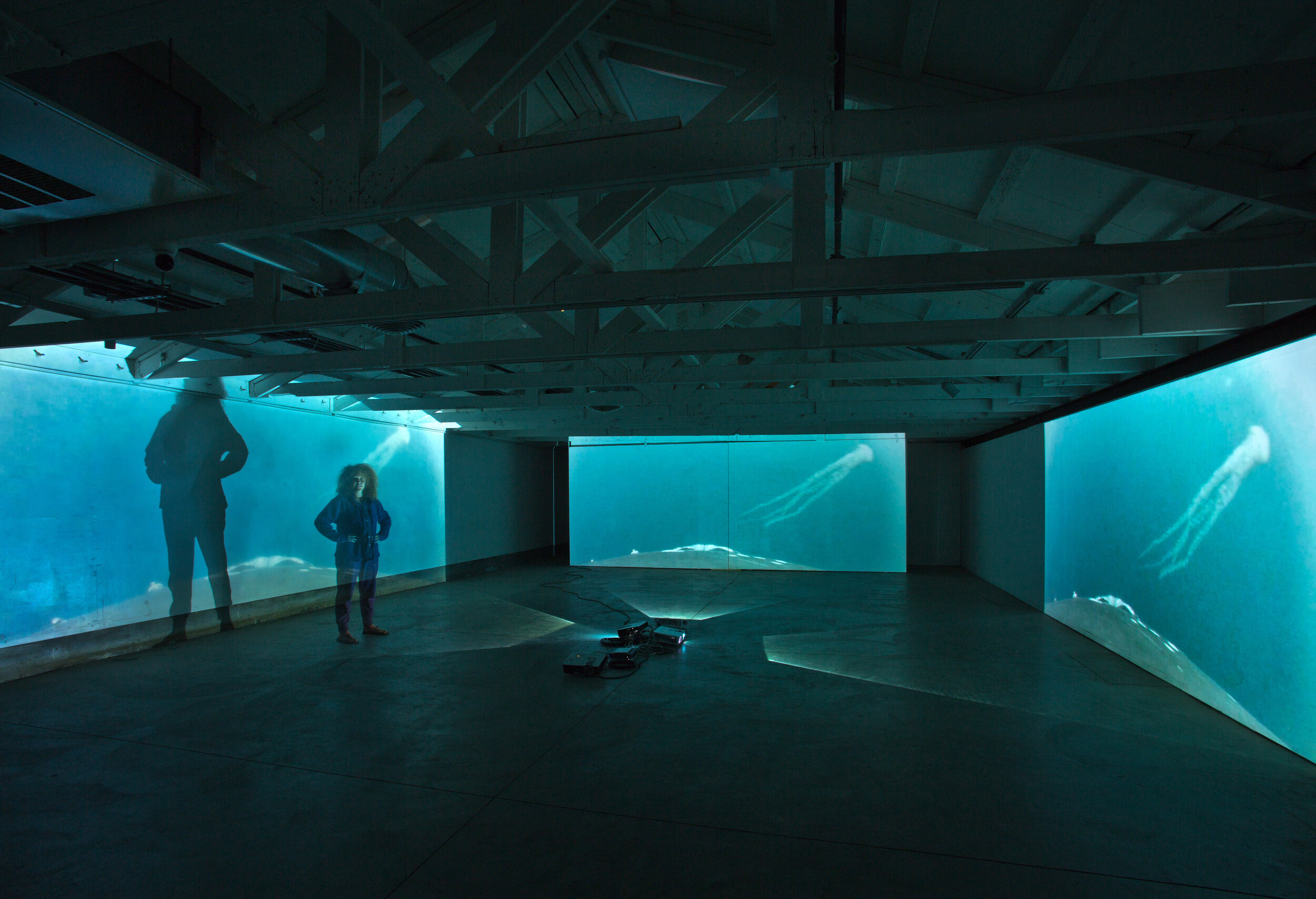

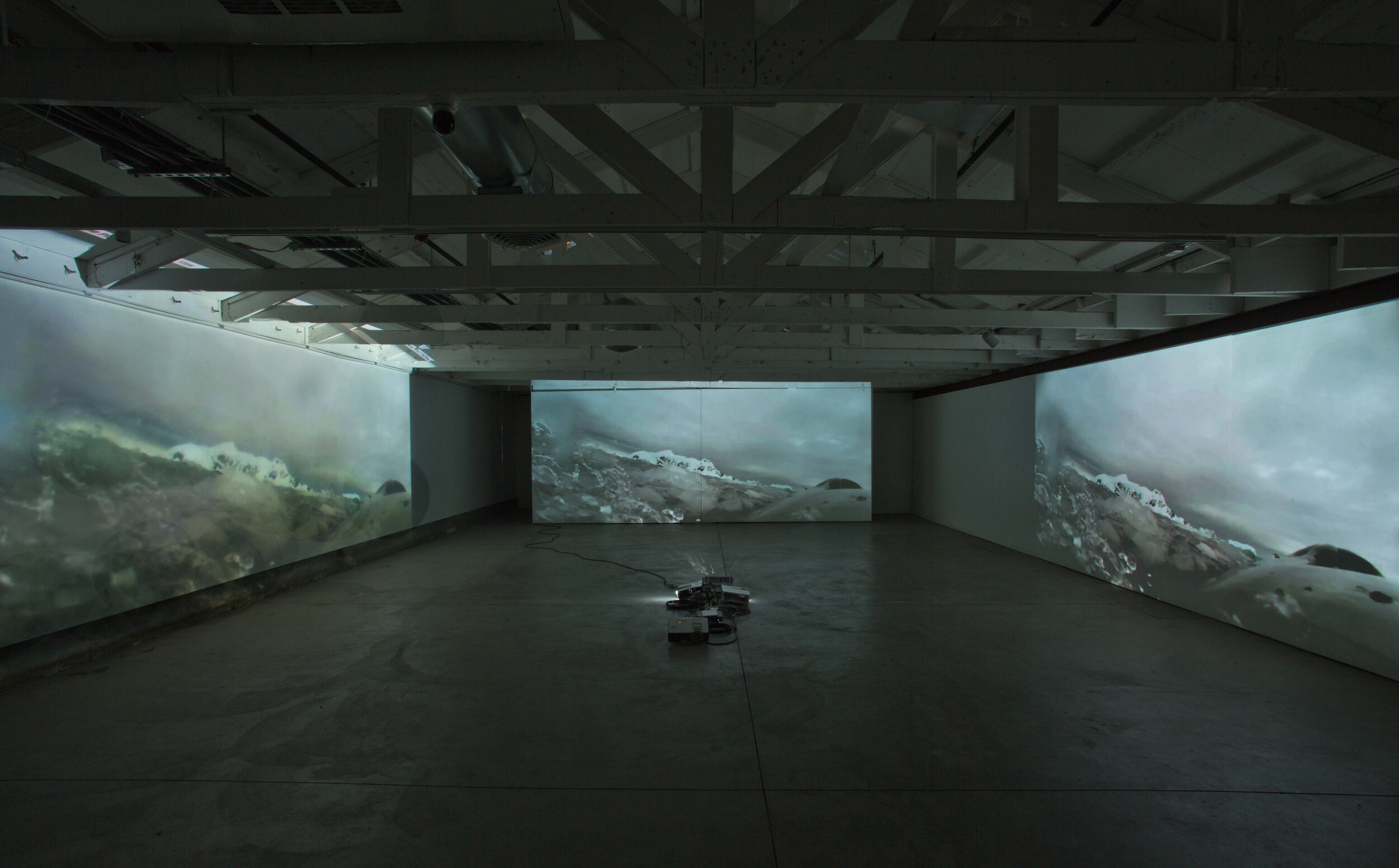
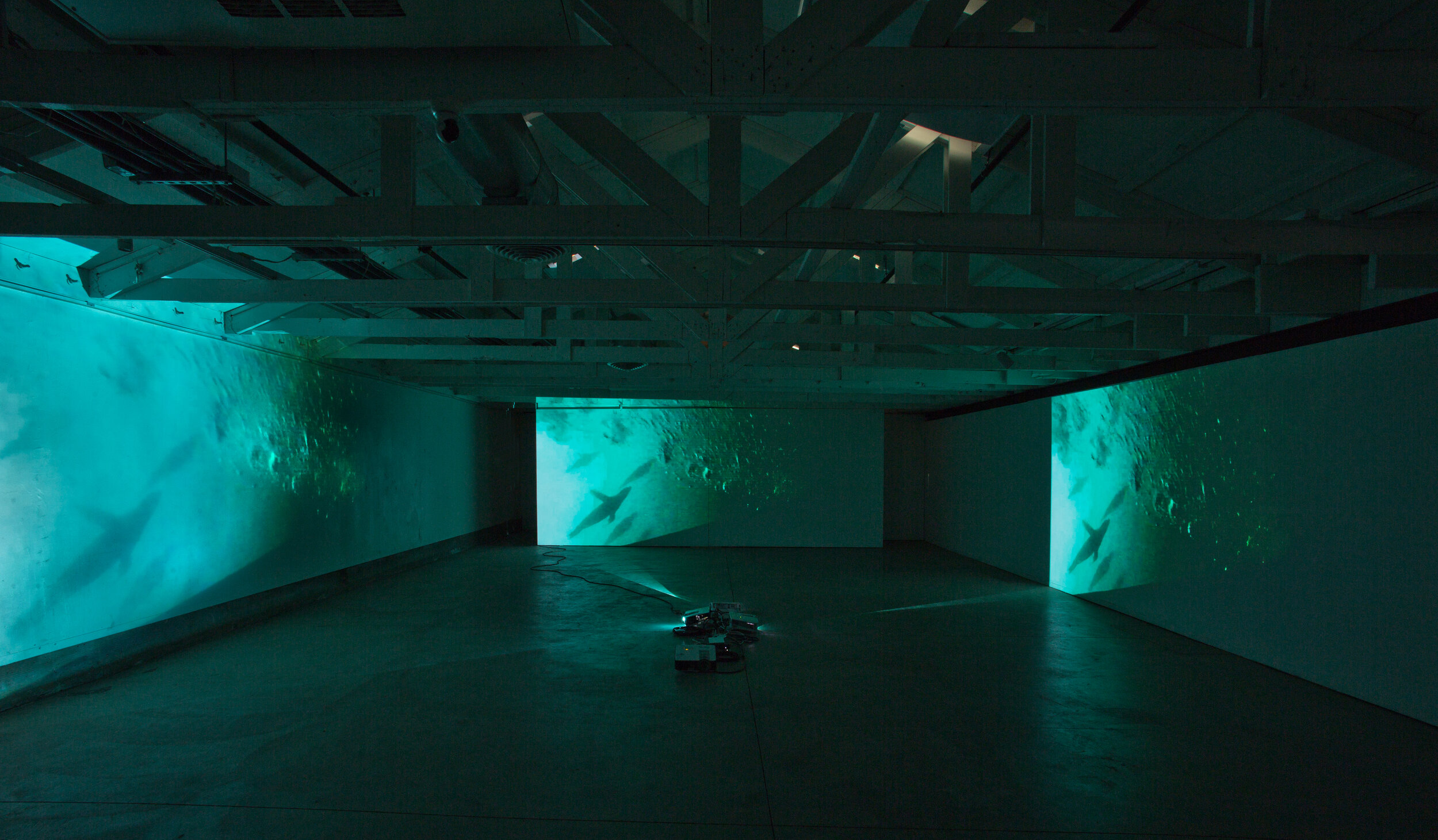
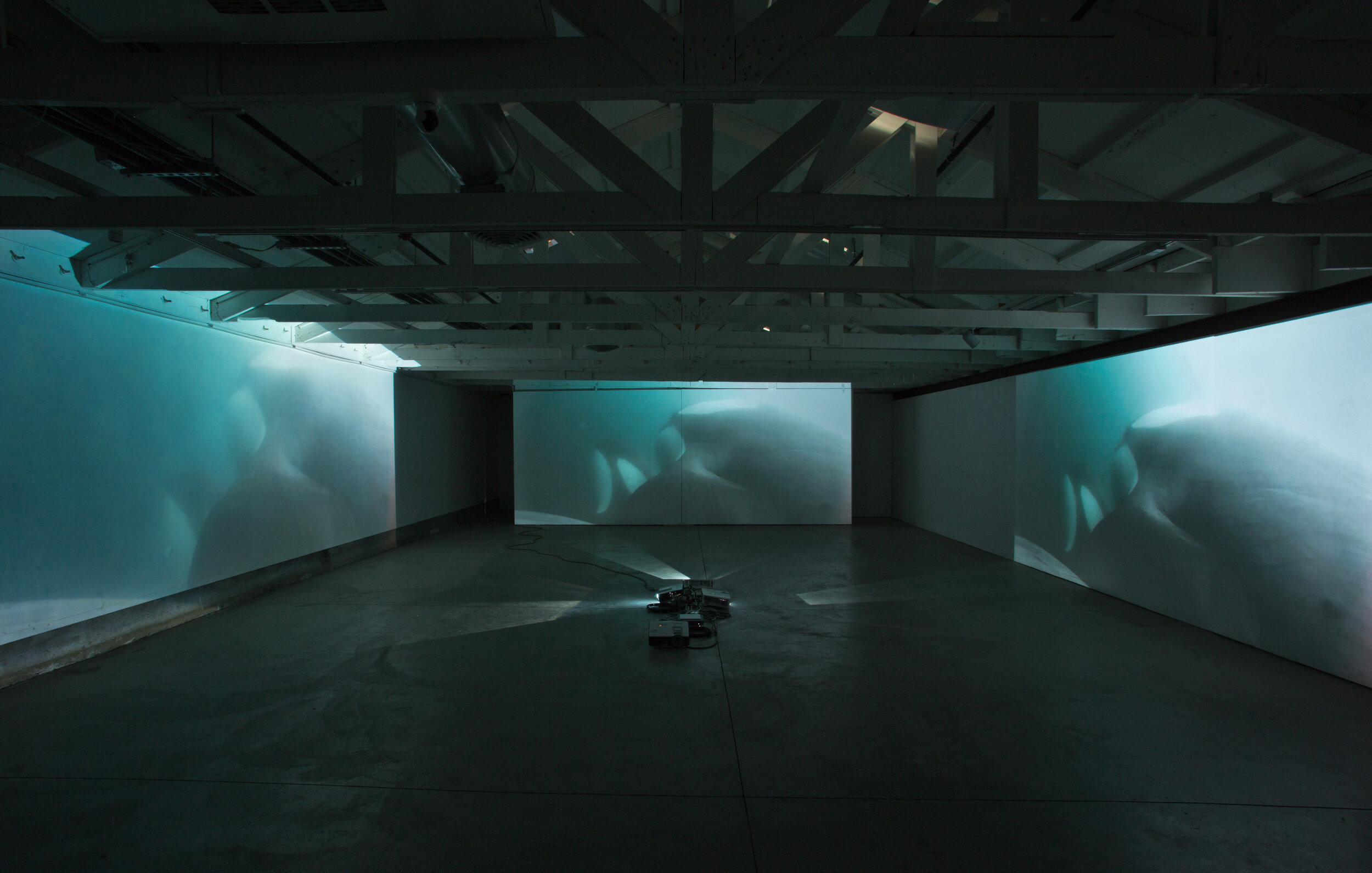
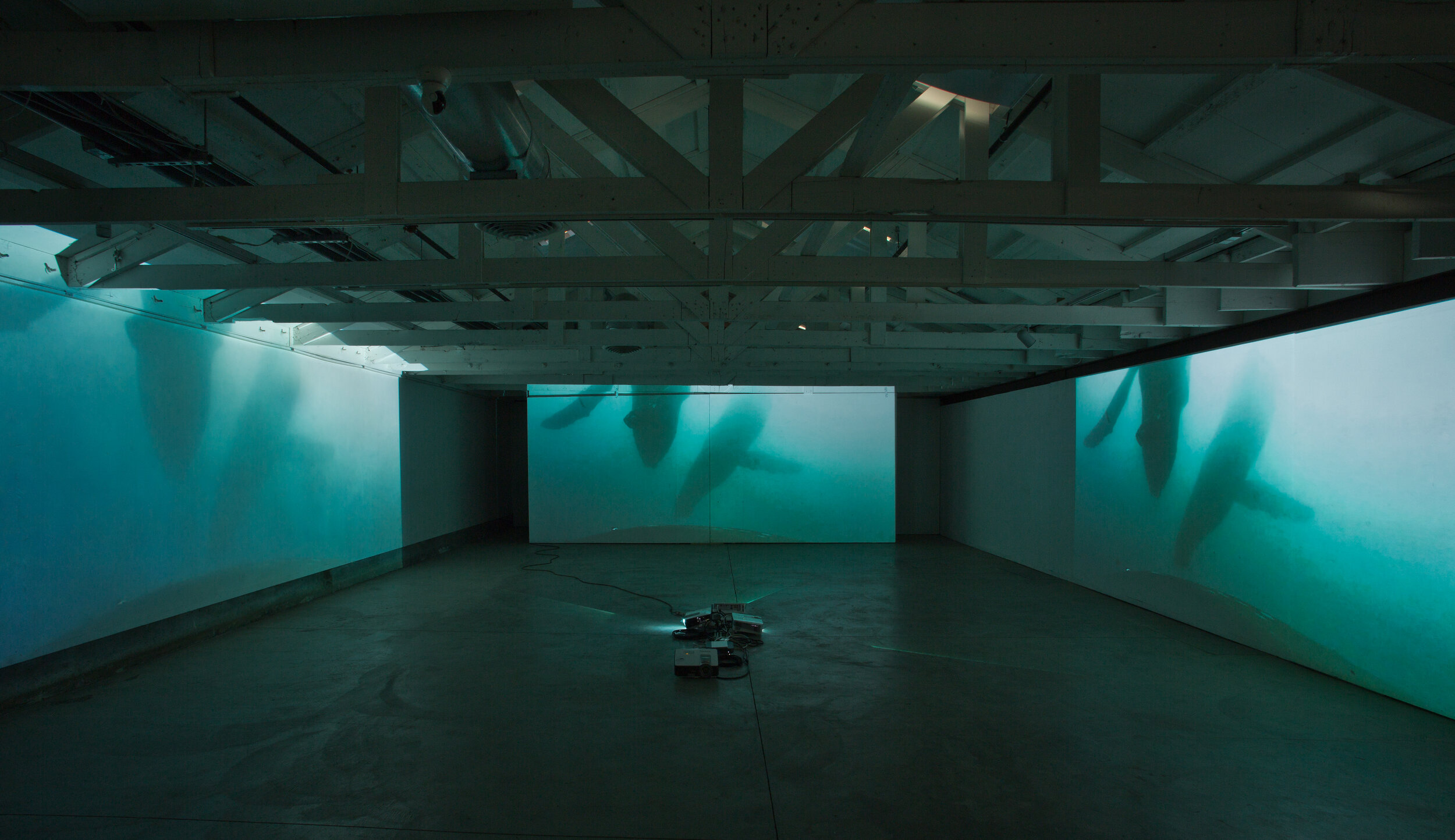
Video Works
From a Whale’s Back uses video and sound taken from tags used by scientists to monitor whales. The installation included four videos.
Thanks to Ari Friedlaender (Ocean Sciences, UCSC) for video and data from the whale tags. Videos were collected under NMFS permit. The tags are lightweight, skillfully placed and humanely attached with suction cups that release within twenty four hours.
Music by Kristin Erickson (theremin), Madison Heying (synth) and Yolande Harris (harp and electronics). Video and sounds edited and composed by Yolande Harris.
Humpbacks bubble net feeding, (sound from tag hydrophone)
Minke whales surface through ice (harp music by Yolande Harris)
Images Prints and Other Included Works
About
From a Whale’s Back (2020) is an installation that explores the visual and sonic underwater world inhabited by whales of different species—orcas, humpbacks, and minke whales—from Antarctica to the northeastern Pacific. It uses video taken from tags used by scientists to monitor whales. From A Whale’s Back explores the latest technology for researching behavioral characteristics of whales, using tags suction-cupped to the back of the whale. Simple advances in technology (miniaturization, power, storage) are enabling collection of data in a way that begins to provide an exponentially more detailed view/image of the underwater world from the perspective of animals in it. Video cameras, combined with hydrophones and other sensors, literally allow our human eyes to dive with these animals.
What we see through the camera lens, our surrogate eyes, is not exactly what or how the whale sees, yet it takes us to a place of understanding we have not been before. It opens a world to us. Viewing it, we absorb the speed, the floating relationality of other animals (comparable to antigravity in the ways it flips our physiological assumptions) and the need to breathe by breaking through the surface before diving again. At the point where the whale surfaces, we see and feel our air-breathing world, before diving below for many minutes. There is a strangeness in breaking the surface and trying to orient oneself in distance and sky, a distinct change from the closeness of the underwater world. Considering this, what are we doing peeking into their world? Knowing that technology both enables and inhibits understanding at the same time—that what we see is extraordinary and yet what we don’t see may be more important—how do we apprehend this material? How do we learn while understanding the privilege of our viewpoint?
Walks and Audio Works
Guided sonic walks were held virtually during the exhibition, with Yolande Harris as the leading participant through online video. Watch the recorded live events.
Featured Events
Acknowledgements
Ari Friedlaender: video content from tags, https://btbel.pbsci.ucsc.edu/
Ann Hazels: director and curator of the Radius Gallery, http://www.radius.gallery/
Kathleen Deck: website design
Santa Cruz Arts Council






